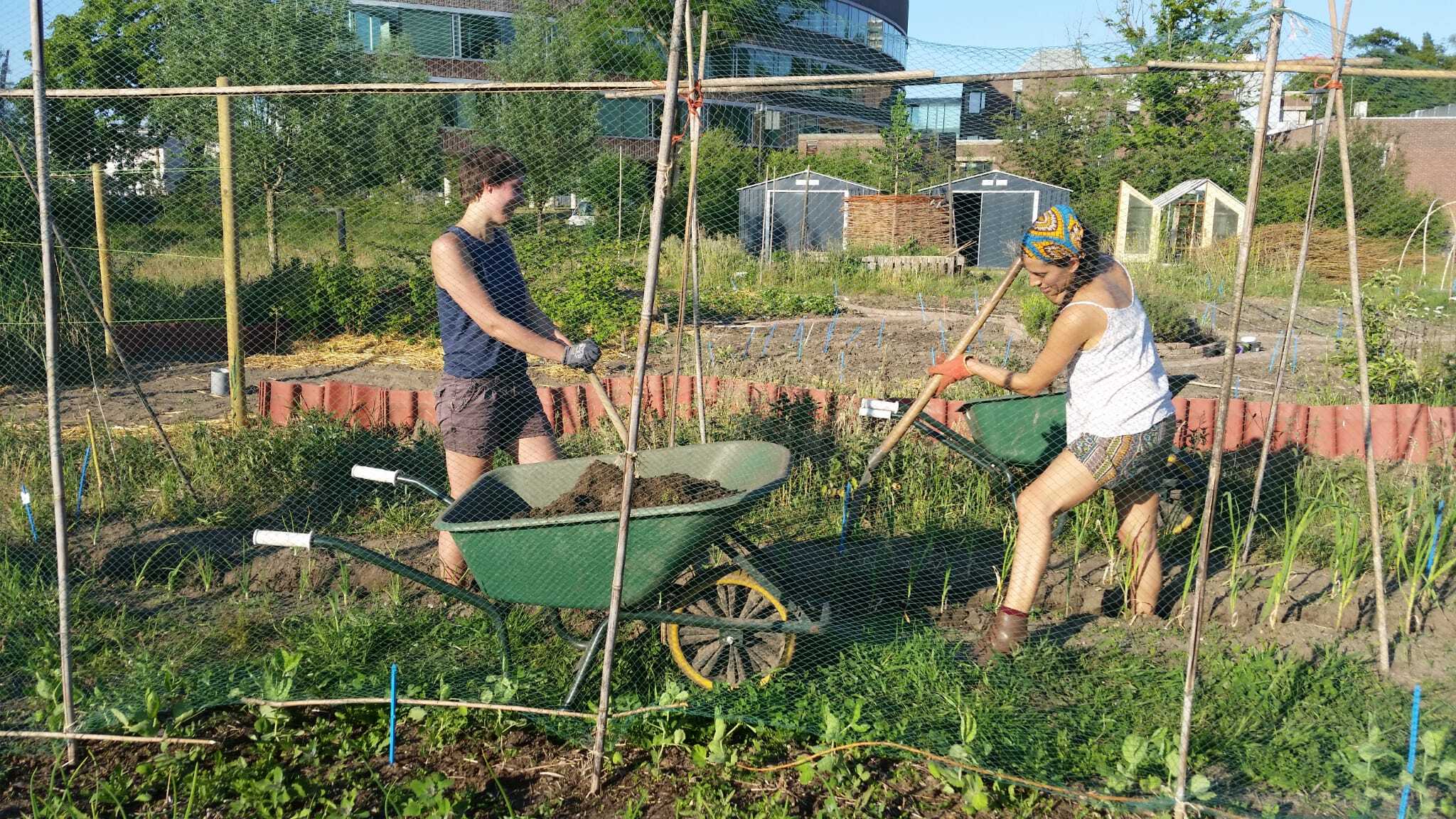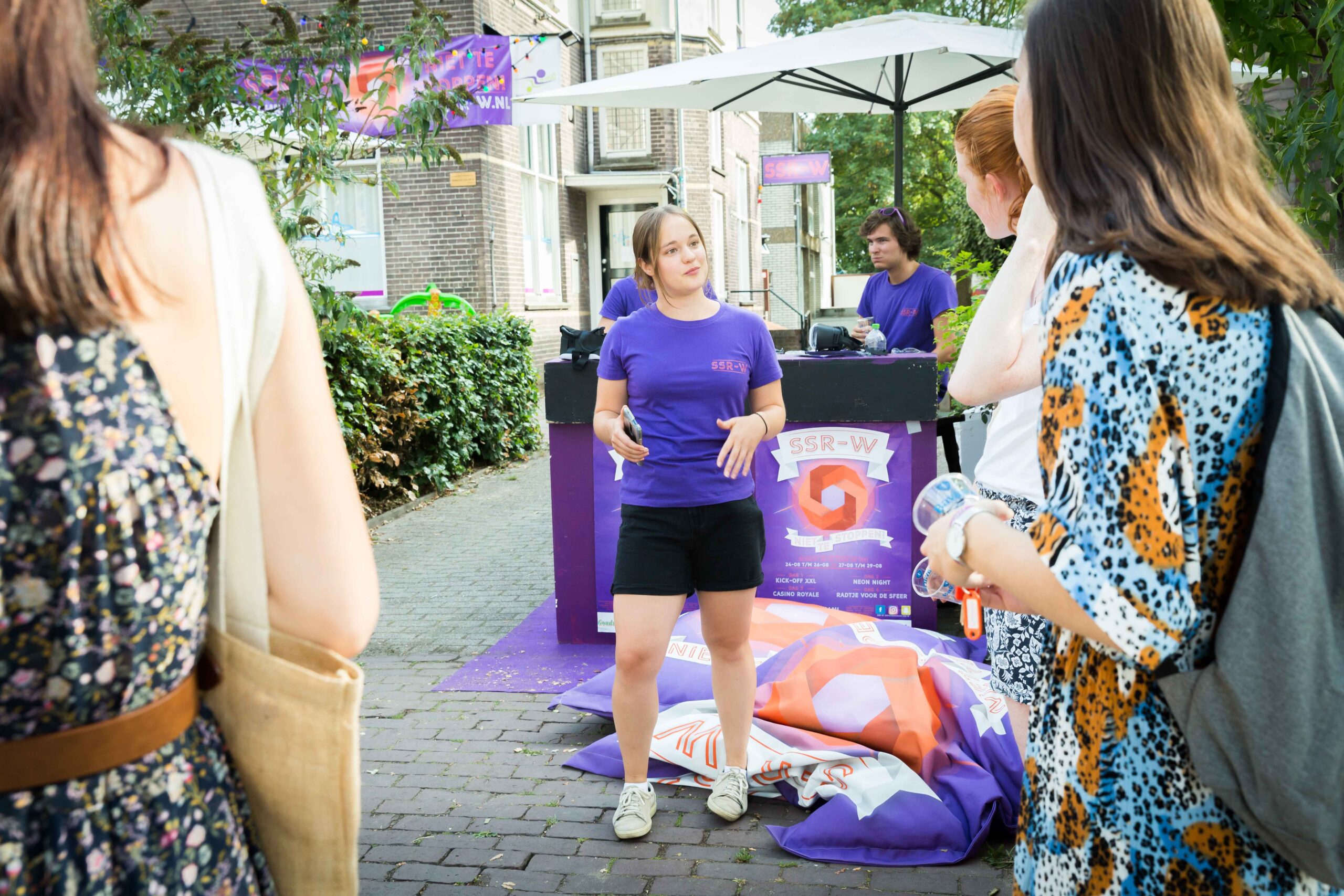Roel Dijksma, teacher of Hydrology
Towards the end of period four, we noticed that the door was closing for campus education. Because we didn’t want to take any unnecessary risks, we then quickly created an online version of a written exam for the Fundamentals of Landscape course, so that students who didn’t feel comfortable sitting an exam on campus, or who had symptoms, could do it at home. Half of the group then did that, and the rest did the exam on paper. We just tried that out: learning by doing.
Straight after that, period five started, with all the changes. I do quite a bit of fieldwork. Now I go into the field on my own with a camera and a tripod, instead of a coachload of students. I’ve done that a few times this week too. I set up the tripod somewhere and explain to the camera what I would normally explain to the group, so as to give them as near as I can the experience of being in the field.
All that planning for nothing
People do look at you as if you are crazy when you stand by yourself somewhere in the countryside, talking to the camera. Someone might be out walking the dog, and wonder: what is he doing?
When I teach online, I place more emphasis than usual on learning goals: why are students looking at a spot somewhere in the Netherlands on their screens? For every course you have to ask yourself: are you achieving the learning goals? You can never completely reproduce fieldwork on-screen, but do they get enough of an idea about it?
Joking
I think as long as teachers make clear what they expect of their students, most of them will follow you. And that interaction is still important, even online. There is a difference between uploading a film and expecting everyone to watch it, or discussing the film afterwards in a virtual classroom.
A lot of what I enjoy about teaching is the interaction with a group. When students are in the classroom, you see how the material goes down with them, you see their feelings. You can play with that, crack jokes and interact. There is a lot less of that now, and I miss it. On the other hand, the situation is so weird that you have to completely change the way you look at your teaching. You have to reassess everything in a very short time. That is good. But it doesn’t outweigh the lack of interaction with the group.’
Hannie van der Honing, teacher of Cell Biology
‘When I heard on the Thursday evening before the start of period five that everything had to be done online, I could have cried. We’ve been working to sort out the timetable since September. The Structure and Function of Plants is a large course with 235 students. The timing of some of the practicals is quite precise. That requires a lot of planning, because you might need to have hundreds of plants ready at the right moment for an experiment. And we had been training assistants on that very Thursday. In retrospect, it was all for nothing.
‘But after that, we got on with it. There are 14 practicals planned for the course, and 13 of them will be done digitally. I give seven of them, in which we look at plant tissues. Normally, students look at slides through the microscope.
I miss the interaction, the emotional side, and the jokes
In the first few weeks we showed photos with captions, but it is tedious to do that for seven practicals. After that, my colleague Otto van der Linden started filming through the microscope with his mobile phone. I record the text using WhatsApp, and Otto turns it all into a film, with arrows that point to what I’m talking about. In Brightspace, we create student quizzes and open questions about those films, and I record a discussion about them before and after, in Orion.
More durable
‘Of course, it is not the same as a live practical in which students study the material themselves and dissect. The emphasis now is more on getting them working that getting them enthusiastic. They can’t learn to make slides themselves now. The advantage of the films is that we can use them again next year. That is good for people doing resits too: there is extra practice material now. The films are a fairly good option for my practicals. But for colleagues who teach through experiments, it is a lot harder. Making a film like ours is easier than creating a fictitious experiment.
‘We have also come up with a regular feature: Plant of the Day. Every day, a teacher or a student makes a film about their favourite plant – perhaps a houseplant. The students also study things like radishes and ginger they’ve bought themselves. ‘Last week was the mid-term test. They did just as well as last year’s group. Really great.’
Tim Stevens, course coordinator for Internet-based Communication and Learning for Social Change
‘The course I give is partly about online learning. That is very relevant at the moment, of course, because all the WUR education had to be converted to online in no time. In a session with Ulrike Wild, programme director of Open & Online Learning WUR, we decided to reflect on the current situation this time, rather than delivering our usual programme.
We adapted our course quickly
We split the students into groups and every group then had to interview students from other programmes about their experiences with online education. Which programmes and tools work well? How does the teacher keep the students’ attention?
‘After that each group got together – online – to compare notes on their experiences: what went well, and what are the factors of success? And what are the challenges for online education? Several factors come up. At the end, each group presented its findings to Ulrike.
Tips for teachers
‘There were a couple of striking points. It is harder for students to study at the computer for hours without any interaction. Live interaction helps, because it means students have to be focused. Students also have a strong need for structure. Many courses have been changed quite a bit, and students no longer have an overview of them. In a lecture on campus you often finish by saying, this is where we are now, and next week we are going to carry on from here. So teachers need to make sure their students are clear about what is expected of them and when. It was also noticeable that many students find it harder to ask questions digitally. They are a bit more hesitant about sending an email than about asking a quick question after class face to face. You can reduce that barrier by explicitly creating moments for questions.’
‘At the start of every course, students introduce themselves briefly. Because we couldn’t do that in the usual way now, I asked everyone to make a video to introduce themselves. Then you have more of an idea who is in your class. Before every lecture, I now give my students a preparatory assignment. I use the input for that in the lectures. I combine previously recorded lectures with live interactions. That way you try to think up an alternative for every activity.’

 Foto: Roel Dijksma
Foto: Roel Dijksma 



